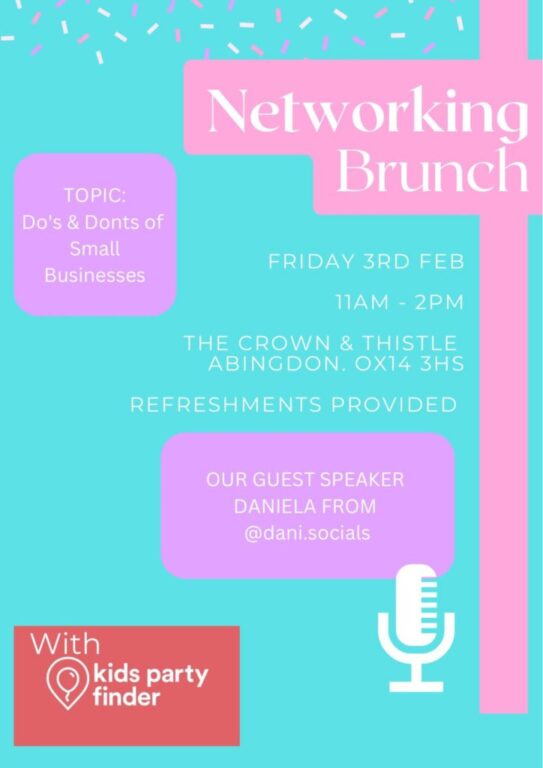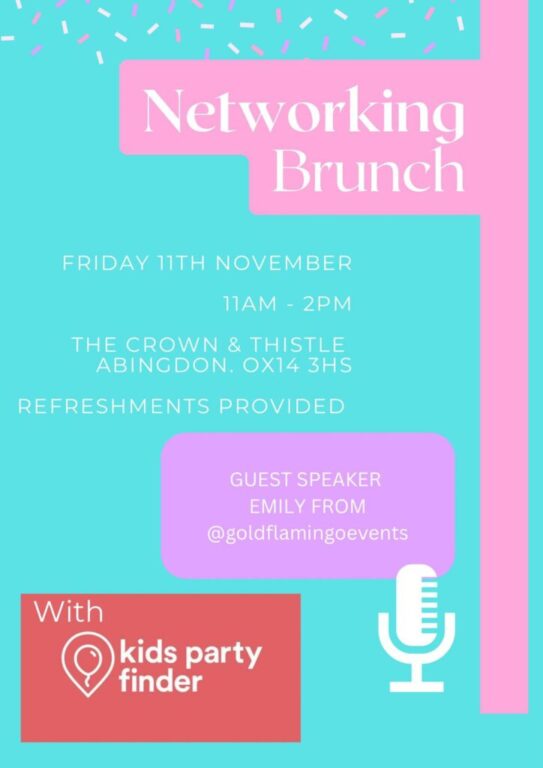Have you seen the Kids Party Finder advent calendar on our Instagram?
We will be showcasing some of our wonderful suppliers through December. They will be sharing handy hint and tips, behind the scenes, festive videos for your little ones and more!
We may even get a call from the big man himself! ??
What is a 12 days of Christmas promotion?
Simply put, think of it like an advent calendar. A promotional campaign where a new, exciting deal or piece of content is revealed every day for 12 days. Retailers, eCommerce and B2B businesses alike leverage a ‘12 days of Christmas’ advent calendar style campaign each year to engage their target audience, deliver promotions and roll out incentives to increase sales. No doubt you’ll have already seen plenty examples of these campaigns yourself in Christmases Past!
When should I run my 12 days of Christmas promotion?
Many businesses choose to run a ’12 Days of Christmas’ promotion in the run-up to Christmas, giving away daily offers and prizes to incentivise sales. Many marketing campaigns run during the four weeks preceding Christmas.
Whether your 12 days of Christmas marketing promotion will take place in the run-up to or after Christmas will depend on your goals, shipping deadlines and other factors relevant to your business so be sure to plan well in advance!
How to leverage the 12 days of Christmas for marketing
The traditional advent calendar is a concept that can be applied to online and offline marketing tactics to keep people coming back and engaging with brands daily. Just think about your chocolate calendar at home and the very persuasive incentives to keep coming back every day!
There’s a reason that daily promotions work – consumers have come to expect these types of incentives. In fact, according to a consumer study by Deloitte, 81% expect to be swayed by festive promotions. And what kind of promotions? Well, according to another recent study, consumers rank discounts as their top purchase incentive, followed by coupons and deals on popular products.
With that in mind, we’ve listed below our 10 top tips to ensure your promotional campaign runs smoothly and that you get the best possible results.
1. Promotions and discounts
Consumers expect promotions and discounts, so don’t lose out on potential custom by not providing some sort of offer. Make sure to incentivise the shopping experience – consumer surveys show that 74% of consumers prefer price discounts, followed by free shipping (72%), BOGO offers (39%) and cashback (29%)
When it comes to fulfilling orders, utilise tactics that consumers find beneficial, such as free delivery and returns. Combine your incentives with a sense of urgency for an added boost, such as limited time offers or first-come-first-served.
2. SEO housekeeping
Things might be looking a little different on the high street this year due to the COVID-19 pandemic. With so much uncertainty and low consumer confidence in visiting physical stores, it’s more important than ever to ensure that you offer the best possible online customer experience. Making sure your site is in good health is key to success.
Whilst it’s probably a bit late in the day to push out content that will rank highly enough to garner organic traffic in time for Christmas, you need to make sure that your current ranking pages are up to scratch.
Check the metadata of your pages – is it enticing enough to get users to click through? Is your site optimised for mobile-first? What are the page load-speeds looking like? These are all things that could potentially make or break those crucial Christmas sales.
3. Don’t forget PPC! (Pay per click)
You’ll likely be using some sort of paid marketing, whether this is social media, display or search. Paid marketing is often competitive, but even more so over the Christmas period, potentially driving up your average CPC. This is why it’s crucial to ensure you’re getting the best possible return on investment.
Once your ads are live, take a look at the competition – are your ads cutting through the noise? Regularly analyse performance, adjust bids (and negative keywords if you’re rolling out a search campaign) and implement A/B testing so that you can tweak your messaging based on what works – you’ll be sure to find a winning combination that converts.
PPC is a great way to reach people within your target audience who aren’t already customers or aware of your brand – a whopping 79% of shoppers say they are willing to buy from a new retailer over the holidays – so getting it right is crucial.
4. Boost engagement with creative content
When running your Christmas promotion, don’t always go for the hard sell. Creative content increases customer engagement and provides the opportunity to weave in subtle cues to drive people to specific product pages or areas on your site. Writing blog posts on related topics to your products or services also provides you with valuable content to distribute through social media and email channels. However, creative content doesn’t just encompass your blog – you might want to write a detailed white paper, checklist or guide, or even create an infographic or video content. Take your creative one step further and boost engagement even more with interactive content such as quizzes, branded games, calculators, assessments or even digital advent calendars.
5. Digital advent calendars
Printed calendars have been around since the early 1900s, but it was Cadbury who developed the first chocolate-filled Advent Calendar we all indulge in at Christmas today, back in 1958 (thank you Cadbury ?).
Marketers have followed suit ever since, raising brand awareness and finding festive success through branded advent calendars. Digital advent calendars provide an opportunity to engage your audience daily, incentivising engagement through daily prize draws, discounts and giveaways to help boost festive sales and leads. You could also integrate further interactivity, such as quizzes or games that increase engagement time with your brand and keep people coming back for more.
6. Gamification
Gamification is a powerful way to engage your audience and even motivate your staff. People love to compete and they love to win – gaming appeals to this basic human instinct. Popular gamification tactics include loyalty cards and points systems, but you can level-up your gamification through rolling out your own branded game.
Branded games for marketing leverage the power of gameplay to help brands connect with their audiences and meet their marketing goals. With over 2.5 billion active gamers around the world, chances are your audience is amongst them.
A branded game to support marketing is a powerful engagement tool, especially at busy periods like Christmas, as games help to cut through the digital noise, capture attention and engage audiences – delivering an average of over 20 minutes engagement time, per player.
7. Social media
According to research, the three top uses of social media for Christmas shopping are reading product reviews (60% of shoppers), browsing product listings (53%) and to look for promotions (52%). This makes social media the ideal place to showcase your products and services alongside reviews – you may even want to work with influencers to post reviews of your products if budget permits.
You can also use social media to promote last-minute gifts and highlight things such as your cut off date for guaranteed delivery. If you’re rolling out an advent calendar or a game, social media is also the perfect place to run a simultaneous Christmas countdown to refer traffic to your game or advent calendar campaign. Again, it’s highly important to make sure your site is mobile-friendly if you’re planning on leveraging social media
** A recent research found that 64% of Christmas revenue generated from social media comes from smartphone users.
8. Roll out an email campaign
You can utlilise the natural build in excitement in the run-up to Christmas by running a well-timed email campaign to engage your audience with daily offers provided specifically through this channel. You could also highlight on your website that you’re delivering subscriber-exclusive offers to encourage people to sign up to your mailing list.
If you’ve opted for a digital advent calendar, a supporting twelve-day email campaign is a great way to boost engagement by sending your audience daily reminders to open the doors. You can also add an element of gamification through hiding a voucher code or instant prize somewhere on your site or within your emails, keeping your audience’s eyes peeled, searching your site and re-engaging with your emails to find the prize.
And don’t forget to check that your emails are mobile-friendly – a recent survey found that smart phone users made up 49% of festive revenue generated by email.
9. Plan for last-minute shoppers
Last-minute shoppers make up nearly 30% of online holiday sales, so you must have something planned to entice last-minute shoppers to buy from your brand. Leverage tactics such as remarketing to target people who have already visited your site or send last-minute offers to your audience via email or social media.
10. 25th December – time to relax?
You may think once Christmas day arrives it’s all over, you can put your feet up and put your festive campaign to bed – but doing so risks missing out on further Christmas sale opportunities! Re-engage your pre-Christmas buyers with a post-Christmas challenge. Run a traditional 12 days of Christmas campaign from December 25th– 5th January, such as a calendar or competition to make sure you get the most out of your campaign.
After all, just because Christmas day itself has been and gone it doesn’t mean that the festive cheer is all dried up! Appeal to your customers need to keep the good times coming by offering them more enticing content to sink their teeth into.
What’s next?
We hope this post has inspired you enough to start creating a winning 12 days of Christmas campaign!
**content credit to Peekandpoke.com



